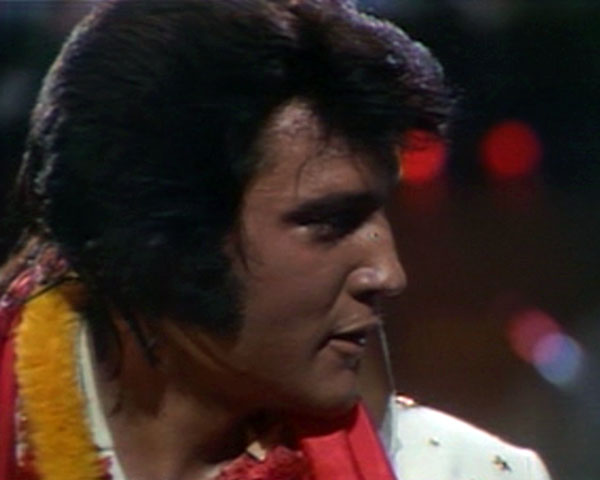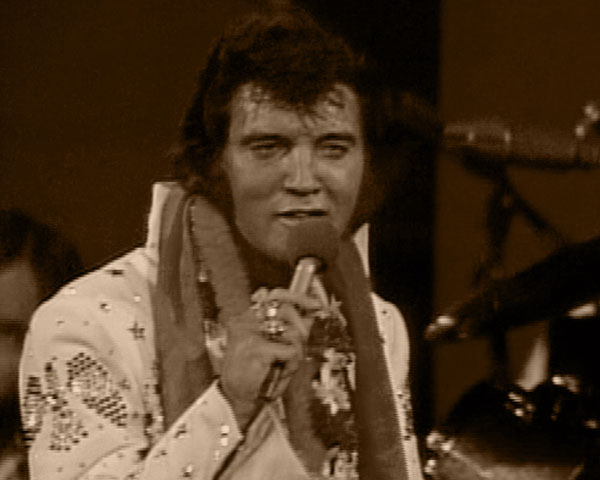One of our annual traditions this time of year on The Mystery Train Blog is that I make note of the fact that I haven’t posted in many months.
Indeed, it has been many months since I posted. Outside of a quick tribute to Elvis Presley in August, my last real post here was in April! I did have a seemingly strong start to 2023 as I began (but never finished) a multi-part review series of Sony’s then-new Elvis On Tour set. I also examined two more Elvis movies.
In the Elvis world, 2023 will be remembered with sadness due to the loss of Lisa Marie Presley on January 12. Nearly a year later, I still find it hard to believe. On a brighter note, Lisa’s daughter, Riley Keough, seems to have risen to the occasion as far as taking up the Presley mantle. Her mom would be proud.
A few tidbits when it comes to Elvis news since I last posted. While reviewing the top-notch Elvis On Tour set back in the first few months of 2023, I kept thinking, “If only Madison Square Garden would get a similar treatment.” I thought it would never happen, since that event had already been revisited as recently as 2012 with Sony’s excellent Prince From Another Planet set. Wow, did I underestimate the Elvis re-release machine. Indeed, the FTD collectors label for Elvis fans released new mixes of the Madison Square Garden concerts not long after I had that very thought.
On the main Sony label, a set containing new mixes of the 1973 Aloha From Hawaii concerts and related material on 3 CDs as well as a Blu-ray version of that event were also released. Sony’s 2023 Aloha From Hawaii release was slightly controversial, though, and rightly so.
FTD only a year before had already released 2 of the 3 CDs of new mixes at a premium price. The remaining CD of the 2022 FTD set used a vintage 2013 Sony mix – meaning that, Blu-ray aside, fans that already bought the 2022 FTD set but wanted all of the new mixes would still have to buy the 2023 Sony set for the 1 CD. Why Elvis’ music catalog continues to be treated in this haphazard manner is beyond me. Incompetence? Contempt? Greed? A little of all of these? Your guess is as good as mine.
While I originally intended not to touch Sony’s 2023 Aloha set until after I had listened to the “new” As Recorded At Madison Square Garden, I couldn’t help but watch the Aloha From Hawaii Blu-ray the night of August 16. I wanted to experience it as a fan rather than as a writer, so I did not take any notes or watch it from a critical or analytical perspective. I just sat back and immersed myself in the shows again. As I’ve mentioned many times on here, my mom was a first-generation Elvis fan who first started listening to him in 1956 when she was 12. For her, 1973’s Aloha From The Hawaii was the absolute pinnacle of Elvis. I miss seeing her watch it.

Elvis Presley conquers the world during the 1973 ELVIS: ALOHA FROM HAWAII VIA SATELLITE television special (NBC)
As for that FTD Madison Square Garden set, I still haven’t even opened it. So, I’m looking forward to listening to it in 2024.
There is also word that Baz Luhrmann, director of 2022’s very successful ELVIS movie, might be assembling a re-edit of “lost” footage from documentaries Elvis: That’s The Way It Is (1970) and Elvis On Tour (1972) – possibly as a streaming series à la Peter Jackson’s The Beatles: Get Back (2021). While intriguing, when it comes to any Warner Brothers project involving Elvis, I will believe it when I see it. I am very cautiously optimistic.
On a more personal note, this month I started wearing hearing aids at the age of 48. I have mild hearing loss in the high frequencies. I am not sure what caused it, though I have theories. Anyway, though “mild,” the hearing loss was affecting my quality of life – particularly when it came to understanding and taking part in conversations. It was impacting my bride and family, too, as they would have to repeat themselves in every conversation sometimes three or four times before I could understand what they were saying, or we would just give up and move on to something else.
While I am still adjusting to them and working with my audiologist to ensure the best settings, hearing aids as a concept have already been life-changing for me. Finally, I can participate in conversations again. As for listening to music, I’m still working through the best approaches on that. In any event, whether processed through my hearing aids or heard naturally with hearing loss, I will no longer be evaluating sound quality if I review audio releases at all.
I still have a couple of posts to go in that review of Elvis On Tour. Will I ever finish them? I am not sure. Maybe. I will surely continue my re-watch of Elvis’ movies, Lord willing. My goal is to cover at least three Elvis movies in 2024. There is also at least one new-to-me book I would like to feature in a future post.
2023 has been a year full of blessings for me – more than I could ever begin to list here. Know that I count those of you who take the time to read my infrequent ramblings here to be among those blessings.
Thank you for reading. May your 2024 be full of joy.
“I pray that God, the Source of hope, will fill you completely with joy and peace because you trust in Him. Then you will overflow with confident hope through the power of the Holy Spirit.”
Romans 15:13






